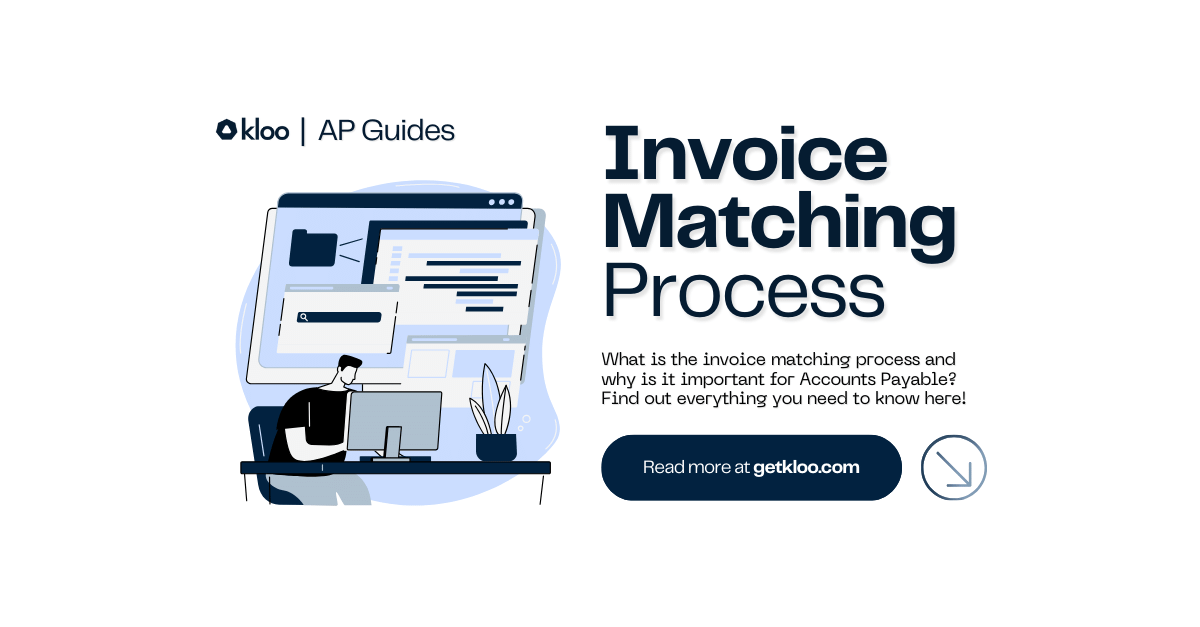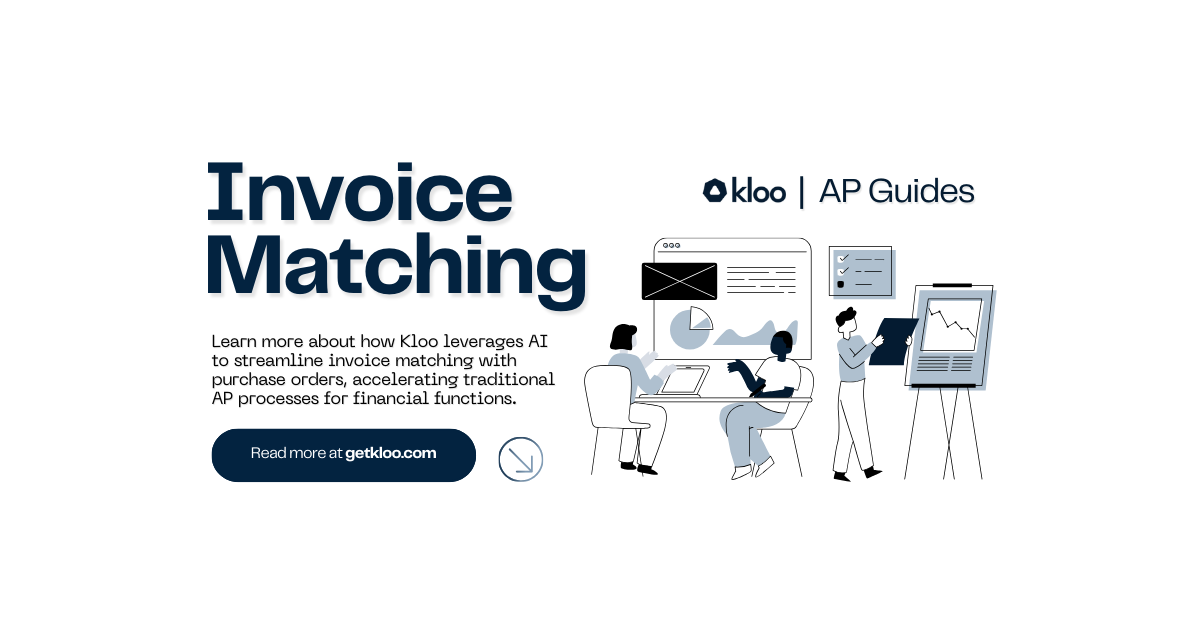
2-Way vs 3-Way Matching in Accounts Payable: What Is The Difference?

Invoice matching is a critical process in invoice management that ensures the details of key Accounts Payable (AP) documents align. This verification process is essential for maintaining financial accuracy, ensuring compliance, and preventing fraud. Effective invoice matching confirms that businesses only pay for goods or services they have actually received, and at the agreed-upon terms. This not only helps in managing cash flow efficiently but also strengthens vendor relationships by ensuring timely and accurate payments.
As a result, matching is an important step in the invoice management process. Because of its feasibility across various organisational standards, it commonly falls into two main bucketed methods: two-way and three-way matching. While these terms may be met with some confusion, we will dive into the main differences and the individual capabilities of each, to understand where it comes into play in the context of invoice processing.
- 2-Way vs. 3-Way Matching: Key Differences and Preferences
- Benefits of 2-Way and 3-Way Matching in Accounts Payable
- The Inefficiencies of Manual Matching
- How Kloo Automates the Invoice Matching Process
- Conclusion: The Future of Invoice Matching is Automation
2-Way vs. 3-Way Matching: Key Differences and Preferences
Before we unpack main differences of each method, it's important to understand what documents are commonly involved with two-way and three-way matching:
- Purchase order (PO): The formal document issued by a buyer to a supplier, detailing the goods or services requested, quantities, and agreed-upon prices.
- Invoice: The bill sent by a supplier to the buyer, requesting payment for goods or services provided, based on the terms agreed in the purchase order.
- Goods receipt note: The document issued by the buyer confirming that the goods ordered have been received and checked for accuracy and quality.
- Service receipt note, or service entry sheet: The document used to confirm that services provided have been completed as agreed, often used in place of a goods receipt note for services.
Two-Way Matching: This involves verifying two documents – the PO and the invoice. The details in the invoice must exactly match the corresponding details in the PO, such as quantity, price, and item description. Two-way matching is simpler and faster but may be suitable for businesses with less complex operations or where there is less risk of receiving incorrect goods.
For example, a small software development company orders 50 licenses for a project management tool and uses 2-way matching to ensure the invoice matches the purchase order in quantity and price.
Three-Way Matching: This process adds an extra layer of verification by including a third document – the receiving report. This is used to confirm that the goods or services billed on the invoice have actually been delivered or rendered, as per the details on the PO. Three-way matching is more comprehensive and hence preferred in industries where the accuracy of deliveries significantly impacts business operations, such as manufacturing and retail.
For instance, a retail store orders 100 units of a new smartphone model, and upon delivery, uses 3-way matching to verify that the quantity and model specified on the invoice and purchase order match the actual goods received as detailed in the receiving report.
Choosing between 2-way and 3-way matching often depends on the company's operational needs and the level of control required over the procurement process.
Benefits of 2-Way and 3-Way Matching in Accounts Payable
Both two-way and three-way matching can have a variety of benefits in the contexts of Accounts Payable (AP) management. Some reasons as to why:
- It avoids overpayment: The matching process eliminates the risk of overpaying a vendor and protects businesses from unnecessary expenses. It also ensures the maintenance of accurate data. This ultimately saves a lot of time and money.
- It's a fool-proof and secure payment process: A 2-way and 3-way matching is performed before making payment to a supplier to reduce the risk of payments against unauthorised purchases.
- It helps in audits: The matching process makes auditing and bookkeeping easier. Complete documentation helps to keep the purchasing process transparent.
- It builds strong supplier relations: The matching process helps to strengthen supplier relations by making payments on time.
The Inefficiencies of Manual Matching
Now that we have unpacked the concepts of what two-way and three-way matching are in the context of AP management, it is also important to understand the setbacks that may potentially arise as a result of matching that is done manually. Especially within a lot of standard or legacy accounting systems, the functionalities available for efficient matching are often outdated, or do not fit the scope of processing that is required in day-to-day operations in the modern age. In fact, some AP teams of professionals may not even have a digitised method for invoice matching and often have to revert back to doing manual processing.
Traditional invoice matching can be exceedingly time-consuming and prone to errors when done manually. The process involves a significant amount of paperwork and requires meticulous attention to detail to ensure that all documents are in agreement. Manual matching can lead to delays, errors in payment processing, and even financial discrepancies, which can be costly to rectify. Additionally, as business scales, the volume of invoices can become unmanageable without an automated system, leading to bottlenecks and strained vendor relationships.
Therefore, it is important to consider the important digital innovations and technology that are re-shaping the landscape of traditional invoice processing. It is is crucial to look for tools that offer capabilities for two-way or three-way invoice matching, and enable AP functions to be more streamlined, efficient, and operational with the volume of invoices that businesses are commonly processing this day in age.
How Kloo Automates the Invoice Matching Process
Artificial Intelligence (AI) is revolutionising the way businesses handle invoice matching by automating the process. AI-powered systems can quickly compare documents, identify discrepancies without human error, and even learn from historical data to improve over time. These systems can handle large volumes of invoices with ease, significantly reducing processing time and freeing up staff for higher-value tasks. Kloo's product offering is currently emerging as an incumbent in the AI-powered automation space for automating invoice management.
Kloo’s automated invoice matching solution is designed to streamline the entire Accounts Payable process, reducing the manual effort involved in traditional invoice verification. Leveraging the power of artificial intelligence and machine learning, Kloo’s platform seamlessly integrates with existing procurement and accounting systems, ensuring that discrepancies between purchase orders, invoices, and receipts are identified instantly. This allows businesses to accelerate invoice approval times, minimise the risk of human error, and maintain complete accuracy in their financial records.
The system also offers real-time reporting and analytics, giving organisations insight into their procurement and payment processes, helping to enhance cash flow management and improve decision-making. Kloo’s solution is scalable, making it suitable for companies of all sizes—from small businesses to large enterprises—ensuring that their financial operations are both secure and efficient. Additionally, Kloo provides a user-friendly interface, allowing users to easily track, manage, and audit their invoices from a centralised dashboard, making compliance and transparency a core part of the invoice matching process.
To get a glimpse at how Kloo's AI is powering the future of invoice matching and management, check out the video below.
Conclusion: The Future of Invoice Matching Is Automation
As businesses continue to seek efficiency and accuracy in their financial operations, the role of AI in invoice matching becomes increasingly vital. Automating 2-way and 3-way matching processes not only helps in reducing operational costs but also enhances compliance and vendor satisfaction. By adopting AI-driven solutions like Kloo, companies can ensure they remain competitive, agile, and financially sound in today's fast-paced market environment. As technology advances, the integration of AI in financial workflows is not just a luxury but a necessity for businesses aiming for optimal operational efficiency.
To learn more about Kloo's offering for automated invoice management and processing, visit our invoice management product page.
Let's get started

